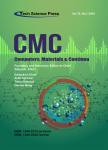Interest Points Analysis for Internet Forum Based on Long-Short Windows Similarity
作者机构:State Key Laboratory of Mathematical Engineering and Advanced ComputingZhengzhou450001China School of Computing and Information SystemsSingapore Management University188065Singapore College of Computer Science and Big DataFuzhou UniversityFuzhou350116China
出 版 物:《Computers, Materials & Continua》 (计算机、材料和连续体(英文))
年 卷 期:2022年第72卷第8期
页 面:3247-3267页
核心收录:
学科分类:08[工学] 0812[工学-计算机科学与技术(可授工学、理学学位)]
基 金:This work is funded in part by the Natural Science Foundation of Henan Province China under grant No.222300420590
主 题:Point of interest(PoI)analysis long and short windows sequential analysis deep learning
摘 要:For Internet forum Points of Interest(PoI),existing analysis methods are usually lack of usability analysis under different conditions and ignore the long-term variation,which lead to blindness in method *** address this problem,this paper proposed a PoI variation prediction framework based on similarity analysis between long and short *** on the framework,this paper presented 5 PoI analysis algorithms which can be categorized into 2 types,i.e.,the traditional sequence analysis methods such as autoregressive integrated moving average model(ARIMA),support vector regressor(SVR),and the deep learning methods such as convolutional neural network(CNN),long-short term memory network(LSTM),Transformer(TRM).Specifically,this paper firstly divides observed data into long and short windows,and extracts key words as PoI of each ***,the PoI similarities between long and short windows are calculated for training and ***,series of experiments is conducted based on real Internet forum *** results show that,all the 5 algorithms could predict PoI variations well,which indicate effectiveness of the proposed *** the length of long window is small,traditional methods perform better,and SVR is the *** the contrary,the deep learning methods show superiority,and LSTM performs *** results could provide beneficial references for PoI variation analysis and prediction algorithms selection under different parameter configurations.



